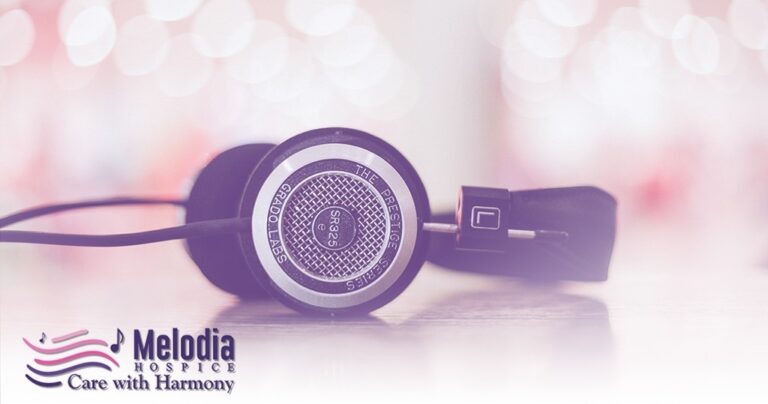Hospice Music Therapy In Orinda City, California
In the final stages of life, it may be difficult to talk to people. When it comes to nonverbal communication, music can be a powerful tool.
Music therapists must get to know their clients and learn about their needs in order to provide the best service possible. The first session will feature a piano, guitar and a few simple percussion instruments. Participation is open to anyone, regardless of their musical ability. The patient can choose whether or not to participate in the performance by playing the instruments, singing or just listening. The first session often serves as a jumping-off point for more in-depth discussions with the client about their personal issues, which can be addressed through music.
What is Music Therapy?

In music therapy, evidence-based and person-centered approaches are used to treat a wide range of patients. When it comes to the brain’s limbic system, a music therapist is trained to understand how music affects activity in the amygdala and other parts of the brain. Therapists use this information to devise therapies that address specific goals in the physical, psychological and social realms as well as the emotional, cognitive and spiritual realms of the patient.
Melodia Care, on the other hand, takes music’s therapeutic qualities very seriously. Hospices are realizing the benefits of music therapy for their patients who are nearing the end of their lives. Recent studies have shown that musical exercises can relieve physical and emotional ailments and enhance one’s overall well-being. With the hope that patients, caregivers and family members will be soothed and stabilized, many hospices are looking into the potential benefits of this holistic practice.
Hospice patients benefit from music-making and music-indulgence in more ways than one. Patients’ general health can be improved by the emotional healing characteristics of improvisation, performances and songwriting, according to studies. When it comes to patients, their families and caregivers, it can have immediate mood-enhancing effects. As a result, patients’ outlooks on the world and their place in it have been found to be improved. Music therapy has been shown to have a number of benefits, including the following:
- Relaxation, serenity and peace of mind are all improved as a result.
- Stress and anxiety reduction.
- Improved communication and speech skills.
- Motor coordination has been improved.
- Memory has improved.
Positive relationships with family members and caregivers. Hospice patients who take part in music therapy are able to share their feelings of joy with their loved ones and make new, happy memories. Patients can regain control of their lives by using music as a creative medium. They can use it to establish spiritual ties with others as well as with themselves. Because it requires some degree of coordination and memory, music performance can also strengthen cognitive abilities.
As with meditation, listening to music can help patients in need of hospice care to center themselves and find peace. The simple act of participating in music with a loved one can help the patient feel more connected to his or her roots, family, culture, religion or favorite childhood memories. As a result, the patient gains a sense of self-awareness and self-confidence regardless of the circumstances. Music therapy has additional advantages, such as the following:
- A creative outlet to express one’s self and gain support from others is provided by this program.
- Emotional and physical symptoms can be alleviated.
- Reduces feelings of isolation or loneliness.
- Encourages physical activity and participation.
- Encourages self-reflection and constructive thinking.
- New treasured memories are made.
Hospice patients’ emotional well-being is greatly aided by holistic practices like music therapy, which can also benefit their families and caregivers. Hospices are experimenting more with these creative exercises in order to create a safe and comfortable environment for their patients.
What Does Music Therapy Address In Hospice Care?
To help patients and their families cope with the end-of-life process, music therapists in hospice care work with patients and their loved ones. Music therapists in end-of-life care, like most of hospice care, focus on enhancing quality of life. As a result, common hospice care aims often address a combination of physical, social/emotional and spiritual needs, such as anticipatory sadness or despair, as well as anxiety or fears about dying.
Included in Music Therapy are the following:
- Songs that are meaningful to the patient and their family can be listened to, live.
- Singing and/or playing an instrument.
- Relaxation methods include the use of music.
- Self-expression and creative songwriting.
- Relaxing music plays in the background as the patient undergoes medical treatment.
- A patient and/or family-driven interactive initiative to create heirloom-quality legacy projects, recordings and slideshows.
- Stress reduction for the entire family, including the primary caregiver.
In a Hospice Music Therapy Session, What Can You Expect to Find?
Hospice music therapy sessions are likely to feature one or more of the following therapies, whether or not the participants are aware of it.
It’s all about making music together. Music therapy is not synonymous with listening to music passively, whether live or recorded. Music therapists, even in the final stages of a patient’s life, are constantly following the patient’s lead in order to actively involve them in the music.
Joint instrument playing or singing might be an excellent way to see this in action. Music therapists use instruments and/or singing to address the needs of their patients in these interventions. A music therapist might set an autoharp on a hospice patient’s lap and hold their hand to help them play the strings (perhaps with an enlarged, thickened version of a guitar pick that is easier to grasp). A music therapist may alter aspects of the music, including but not limited to the key, range, pace and musical cues, in order to make vocalizing more accessible to the individual. These interventions can be utilized for a variety of purposes, including enhancing fine or gross motor movements or providing opportunities for meaningful connection.
Entrainment in Music Therapy: Music therapists seek to actively engage hospice patients even if their physical abilities have deteriorated and instrument play is no longer the most appropriate option. At this time, music therapy can be used to address a variety of aims, including calming agitation or stabilizing a patient’s heart rate or breathing pattern, among others. As hospice workers know, breathing near the end of life can be erratic, unsteady and laborious, especially for individuals who are dying. The use of entrainment can help music therapists to synchronize with a patient’s breathing pattern (reflecting any breathing abnormalities in the music) such that the music steadies the breathing over time.
In music therapy, the iso-principal technique can be utilized to improve mood, as well as for a variety of other therapeutic objectives. When a patient with dementia is showing signs of anxiety, such as a quick heartbeat. Musicians who are trained in the iso-principle can utilize it to match the patient’s emotional state to music (for example, by playing guitar at the same tempo as their speech, singing along with the patient’s words or playing a song that matches their mood). It is possible for the music therapist to gradually get the patient to a position of emotional validation, which finally leads to a more relaxed state of being.
Emotional Release

Pose the question of a special song that the group can sing together if their family is there. You could offer relaxation strategies if they’re having trouble unwinding due to stress or anxiety. You might also offer them an instrument to play or sing along with them in order to help them cope with their distress. The therapist uses their musical skills to help patients express themselves through music, whether they are familiar with it or not.
Each person has a distinct preference for music. Part of our identity. A vast variety of music has been suggested by the hospice residents, from classical music like Chopin to Irish folk music and Christina Aguilera! Each person’s preferences and needs are taken into consideration when we design a program.
An apprehensive and demotivated patient was in our care. The patient was playing the tambour, a large drum, during a song-based therapy session. The patient was exhausted at the end of the session, but it had provided them with a crucial outlet for their emotional and physical needs.
Music Therapy Benefits

We also assist our clients in establishing a musical legacy. As an example, this could include helping them to write a song in honor of their loved ones. For their family, we assist them in recording it and put it on a CD. This gives the client a sense of purpose and focus: they’re still contributing something of their own to the project.
Additionally, music therapy is an excellent tool for regaining emotional, spiritual and social health.
Pain perception and nausea and vomiting associated with chemotherapy have been found to be reduced by listening to music. Musical selections that are well-chosen can help alleviate stress, worry and insomnia as well as motivate physical activity and improve one’s overall sense of well-being. Additionally, music therapy can help the individual maintain a sense of autonomy and control over his or her own life through the provision of options for choice and decision-making. In order to get as many people involved as possible, it is possible to alter the instruments and materials being used. With regard to physical discomfort, music therapy provides the following:
Relaxation Improved

Music therapy can be a powerful tool for relieving stress. The integration of music with relaxation practices has been shown to promote a deeper level of restorative relaxation. Music therapists that have a lot of experience can identify the types of music that the patient responds to most and create the most calming environment possible.
Improved Communication And Speaking Skills

Speech and singing share many of the same oral motor skills, such as breath control, voice intensity and articulation. Because of their medical condition, some individuals may benefit from music therapy by learning to sing.
Improved Motor Coordination

Plucking a guitar string or pressing a piano key requires precise bodily movements, which instruments help improve. These specific physical activities can help patients regain lost muscular control and improve overall hand-eye coordination over the long run.
What's The Purpose Of Including A Music Therapist On An Interdisciplinary Team?

Interdisciplinary teams are realizing the importance of having a music therapist on their staff, since evidence demonstrates that music therapy can help patients in a variety of ways.
Contact Melodia Care Hospice & Palliative Care if you or a loved one is in need of hospice or end-of-life care at 1-888 635-6347 (MELODI-7).
